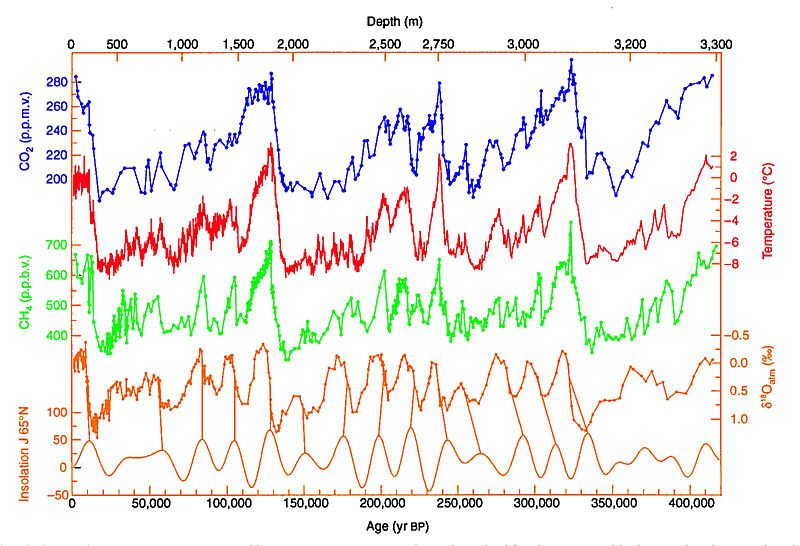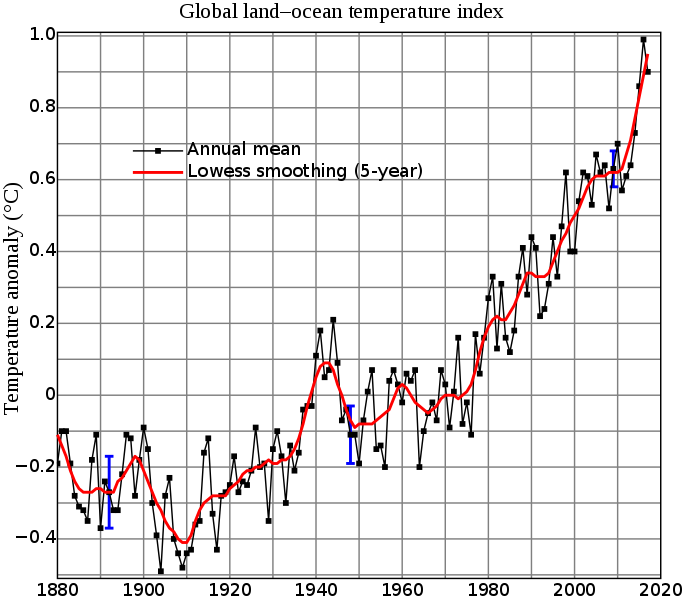Today’s is the follow-on article to “Want to know if climate change is real? For answers, just look to the Valley.”
Climate change has undoubtedly left its imprint on California’s San Joaquin Valley. Though I do not know first-hand the full extent of climate-change-related circumstances elsewhere, I do, however, have direct knowledge (through observation) of some of the ways in which the changing climate has affected the Golden State’s central interior region.
Though the terms climate change and global warming have in the past been used interchangeably and still are, they are not, however, one and the same thing.
Whereas climate change describes a change, shift, swing in an area’s or, in the broader sense, the world’s climatic conditions even, global warming refers to a global-mean-surface-temperature (GMST) increase, such exemplified in this sentence: “Earth’s mean surface temperature has increased 1.2 degrees Celsius since times just prior to the beginning of the Industrial Revolution (circa 1760).” With global warming, there has also been global cooling, said evidence supporting such being incontrovertible. See below graph.

In referring to the ice-core-data graph above, what you will notice is that going back some 420,000 years (horizontal axis), there have been four major periods of warming as well as an equal number of major periods of cooling. It also can be discerned that the times when temperature (red line) spiked to its maximum positive level, the frequency at which this had occurred happened approximately every 100,000 years. One such GMST spike occurred some 330,000 or so years ago, this based on collected and analyzed ice-core-sample data. During this time and also determined from analyzed ice-core-sample data, methane (green line) and carbon dioxide (blue line) in the atmosphere spiked as well, the carbon dioxide concentration in air peaking at what looks to be at about the 300-parts-per-million-by-volume (ppmv) mark – perhaps even a bit less.
Also from those three plots above what is plain to see is that at times when the GMST hit its highest positive peaks at around 330,000, 230,000 and 130,000 years ago, there were corresponding highest positive peaks reached with respect to the concentration in the atmosphere of the two aforementioned GHGs.
This prompts me to now ask the $64 million question as it pertains to global mean surface temperature change: Have the swings in GMST driven corresponding proportional shifts in air concentration of this GHG pair? Or, is it the opposite, that is to say, GHG shifts causing corresponding changes in GMST? It would appear, based on the graphical data presented, this is an either/or situation or perhaps it’s a case of each influencing the other. Is that even possible? Who can say for sure? One thing, there seems a definite connection.
Also worth noting is that at no time during these cycles in the 420,000-year span has the concentration in the air of carbon dioxide ever exceeded the approximate 300 ppmv level. Post-Industrial Revolution the story is decidedly different. And the figure right now? Based on the information cited in one referenced source, today’s atmospheric carbon dioxide concentration is 418 ppmv.

The third extremely noteworthy fact today is that in again referring to the ice-core-data (upper) graph, it is evident from this that the rise in GMST in each 100,000-year cycle is not just continuous or steady, but that it occurs much more abruptly or quickly compared to the fall in GMST which, each time, has taken place over a much, much longer period of time.
For an explanation of what could account for the approximately 100,000-year-long warming/cooling cycles, meanwhile, see: “100k-year cycles, temperature swings and GHG rises: What does it all mean?”
Upper image above: Wikimedia Commons
Note: Carbon-dioxide concentration in the air (blue line) about 330,000 years ago (refer to the ice-core-data graph above), in reference to that, I had initially stated that the concentration “looks to be north of 300 parts per million by volume.” Upon closer examination, that does not now appear to be the case. The statement in question has since been revised.
This post was last revised on Jun. 10, 2020 @ 6:39 a.m. Pacific Daylight Time.
– Alan Kandel
That’s pretty detailed stuff Alan. Good research and reporting.
So I guess there were climate protests at the Yale-Harvard football game. I know these people are just trying to do a good thing for climate change. I mean these people just wanted to see a football game and enjoy their day. What’s next? You know what I mean?